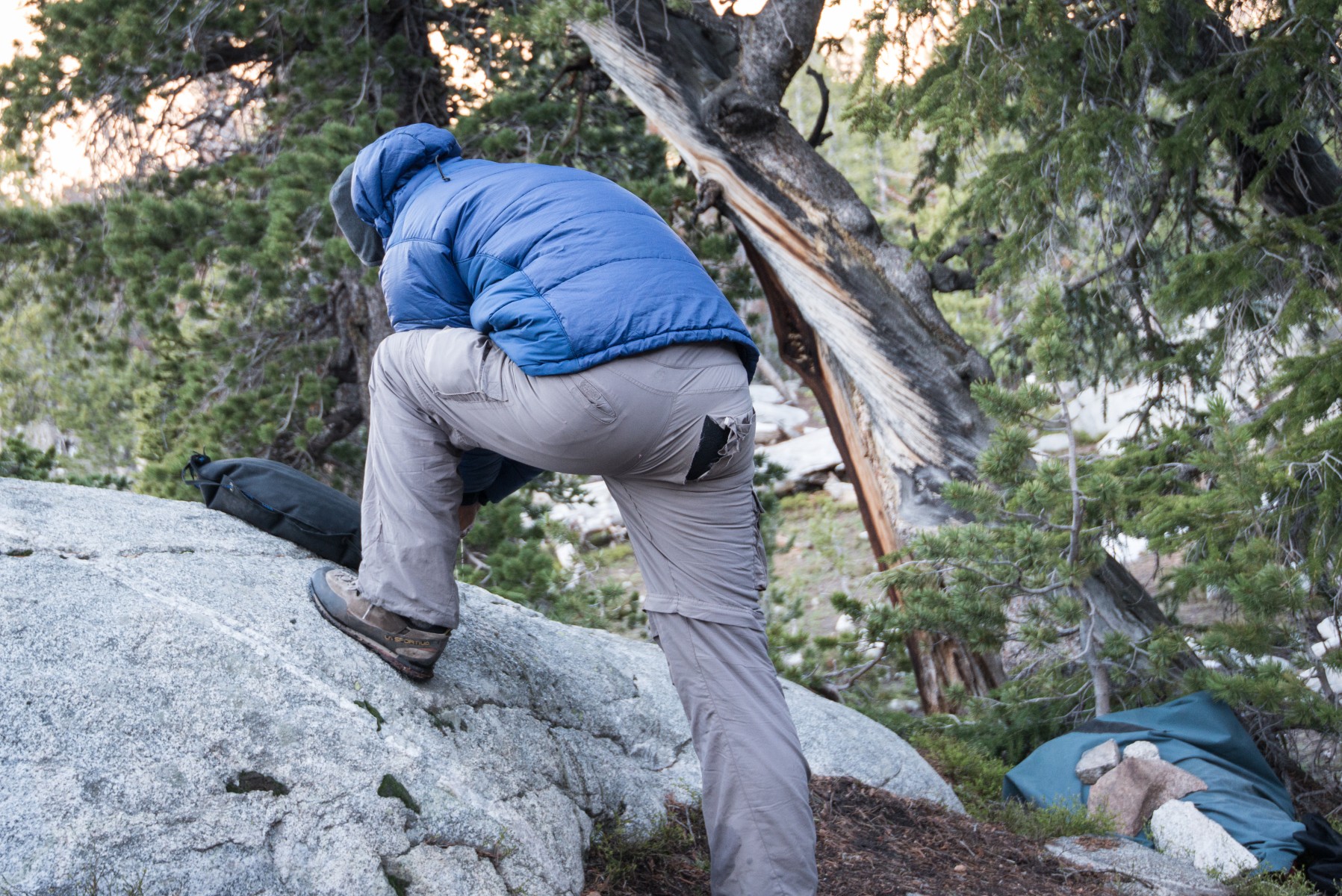How To Fix Anything

“Seriously, we didn’t bring any duct tape!? Sewing needle anyone?” I asked, hopeful but not optimistic.
“Nope,” replied Louis, “but we’ve got plenty of fish hooks.”
“Huh… interesting… thread?” I pressed, sensing potential.
“I have a little dental floss,” offered Steven.
“Tippet!” I exclaimed, suddenly inspired. And with that I had a plan. Knowledge and skill were still in short supply, but I rarely let such minor details hold me back.
I’m hard on gear, particularly pants. For some mysterious reason, mine have an unsettling tendency to split in immodest places. I like to think it’s my lifestyle – long days afield scrambling over rocky terrain and bushwacking through dense brush, heedless of danger or damage, in single-minded pursuit of my quarry. I harbor a sneaking suspicion though that being a gentleman of robust proportions may also play a role. For their parts, Louis and Steven couldn’t have cared less about the causes. They just wanted the giant gash in the seat of my pants repaired and my ample butt back under wraps where it belonged, stat. If that meant brainstorming solutions over supper in camp, so be it.
“Do you think they favor 4 or 5x mono on Saville Row?” I pondered aloud settling down to my evening chore.
“I think yours might be a 2x job,” offered an unsympathetic peanut gallery. “Flourocarbon… no offense.” Thus was born the…
STS Backcountry Sewing Kit
4 sacrificial flies (sizes 6-12)
2x Flourocarbon Tippet
Forceps
Nippers
Headlamp
Scotch
Step 1: Help yourself to a slug of scotch and pass the bottle. Field repairs can be long and arduous. Practitioners should not attempt them without proper fortification.
Step 2: Select the fly you are least likely to regret not having later and, using nippers, strip it down to the bare hook. Straighten this hook with forceps and crimp the barb as flat as possible.
Step 3: Thread the hook-eye with tippet, and make your first stitch. You’ll find the eye, flaring and surprisingly grabby as it is, difficult to pull through the fabric. Grab the point with your forceps and pull, tugging, twisting and cursing as necessary.
Step 4: Now that you’ve broken the hook, repeat Steps 1 and 2. Ignore any and all wiseass comments from your companions. Continue stitching.
Step 5: Tie off the completed repair with the knot of your choice (I favor a double bowline), and set aside garment to rest overnight. Enjoy a congratulatory snort of scotch. You’ve earned it.
Step 6: In the morning, feign nonchalance when your hard won fix fails to outlive breakfast.
Step 7: Make a note to pack some duct tape on your next trip.


The problem here is not the absence of supplies in the pack. Rather it is the presence of junk in the trunk.
I think Walt is on to something. And Matt – bring a couple pairs of nice, clean pants to Colorado.
You don’t think it’s a duct tape butt patch kind of place?
Walt, that is perhaps the most insightful, witty and hilarious comment we’ve ever had on STS!
Duct tape is a serious contender for space in the pack. During a 4-1/2 hike- in trip to a small mountain stream last year I had one of my very old Orvis lightweight canvas wading shoes split open from the front of the sole to the arch, making each step a flappy or sloshy tripping hazard. I struggled with it for the rest of the day. I promised henceforth to always include a partial roll of duct tape on such adventures. I purchased a new pair of high-tech hiking/wading shoes, which I hope will last as long and with the same good service that as my old lightweight wading shoes did.
It’s better to have it and not need it than need it and not have it!
Copious supplies is not the answer. In truth, anything broken can be fixed with one of two products – duct tape or WD40. If it moves and it shouldn’t, duct tape. If it doesn’t move and it should, WD40. It’s just that simple.
I’ve long known you were an accomplished writer. I shouldn’t be surprised to learn that you’re a grounded in the fundamentals of engineering too.